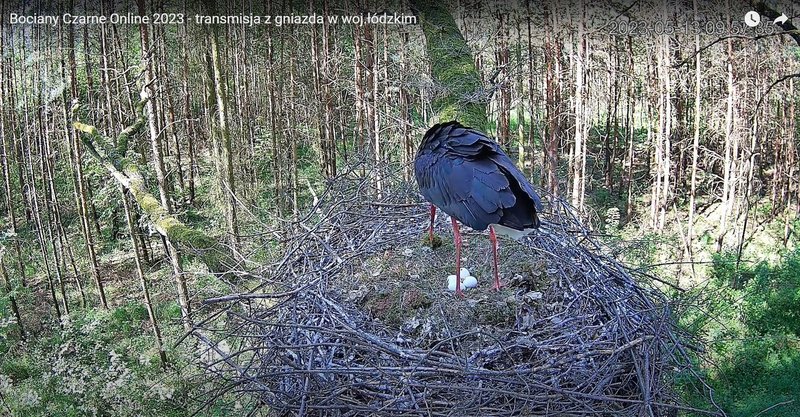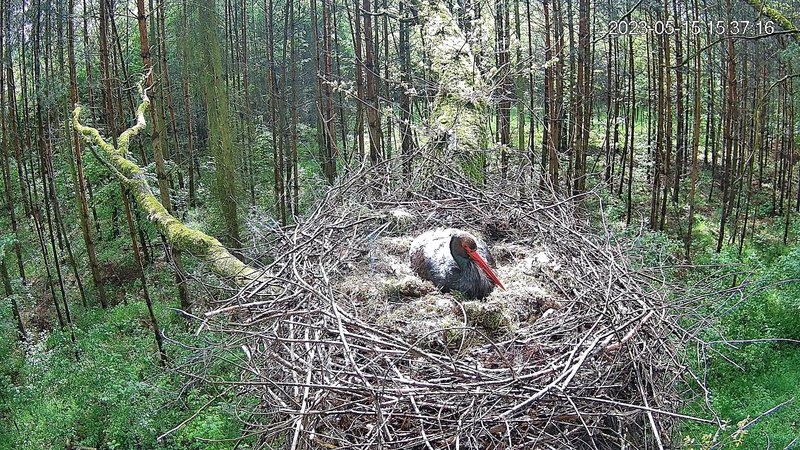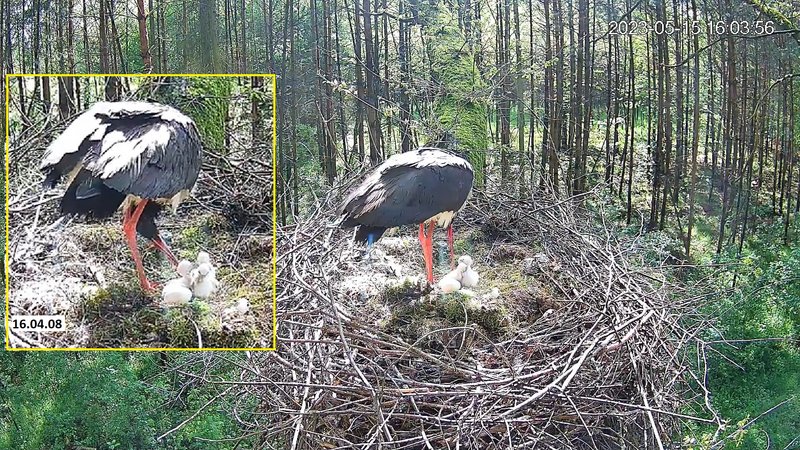FB LasyPanstwoweLodz
16.05.2023 https://www.facebook.com/LasyPanstwoweLodz/posts/pfbid02cddBYRWUbUSk3Fzt57pLtt4ZHD1Cn7nC65tZ4FBYXaSmtGgwEFaKJEZbx8FkNFz6l
This season, Fermina3 has laid four eggs, from which three chicks have already hatched. The fourth will hatch any moment now.
In storks, which are nesters, the hatching of chicks is extended over several days and therefore we speak of asynchronous hatching in this case.

Asynchronous hatching is a parental strategy to adapt the number and quality of offspring to the food resources available to the chicks at the time of peak food demand.[/color][/b]
In many other bird species, mainly nesting birds, chick hatching is synchronous - all chicks hatch in a short period of time. They are all of a similar size and are all at a similar stage of development. An example of such a species is the capercaillie. A capercaillie hen lays 5 to 12 eggs, from which all the chicks hatch synchronously (within a few tens of minutes) after about 25 days. Without the help of the male, the hen takes care of her brood for more than two months - guiding the chicks and defending them from predators. This is only possible if the chicks are at a similar stage of development and can leave the nest at the same time under the guidance of the female.

Whether chicks from one laying hatch simultaneously or consecutively over a longer period of time depends on when incubation started. If incubation started after the last egg was laid the chicks hatch synchronously. On the other hand, starting incubation (sustained brooding) before the last egg in the brood is laid results in asynchronous hatching of the chicks.
 In black storks, permanent incubation begins after the second egg is laid, regardless of whether there are 2 eggs or 6 eggs in the laying. As the nestling has to develop for about 31 days, the effect is to stretch the hatching period considerably, the greater the number of eggs in the laying.
In black storks, permanent incubation begins after the second egg is laid, regardless of whether there are 2 eggs or 6 eggs in the laying. As the nestling has to develop for about 31 days, the effect is to stretch the hatching period considerably, the greater the number of eggs in the laying. In our nest, it took 35.05 days from the laying of the first egg to the hatching of the first chick, while it took 31.21 days from the laying of the second egg to the hatching of the first chick. That is, the embryos in the eggs only started to develop after the second egg was laid.

Although Florentino often sat on the eggs already after the first egg had been laid, but with large gaps and this was not enough for embryo development to occur. And the first egg waited patiently and safely (all the while being watched by one of the parents) for the start of the permanent incubation.

This year, this wait was further prolonged because
Fermina, probably due to the cold weather, only laid her second egg after four days, not after two as is usually the case with storks. And in our nest, the fourth chick should still hatch today or tomorrow.
Translated with
www.DeepL.com/Translator (free version)



